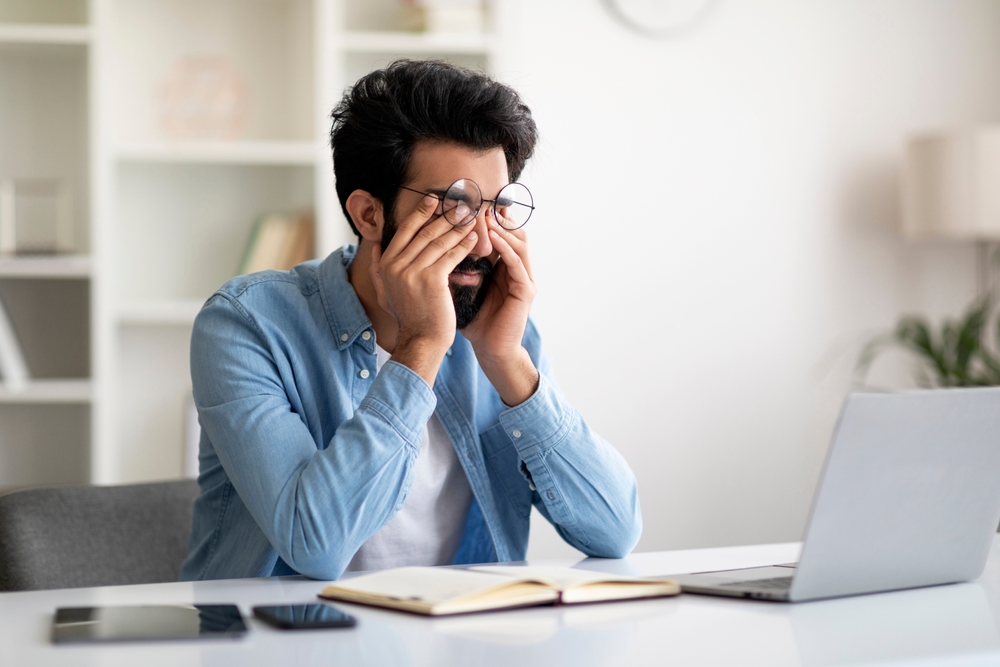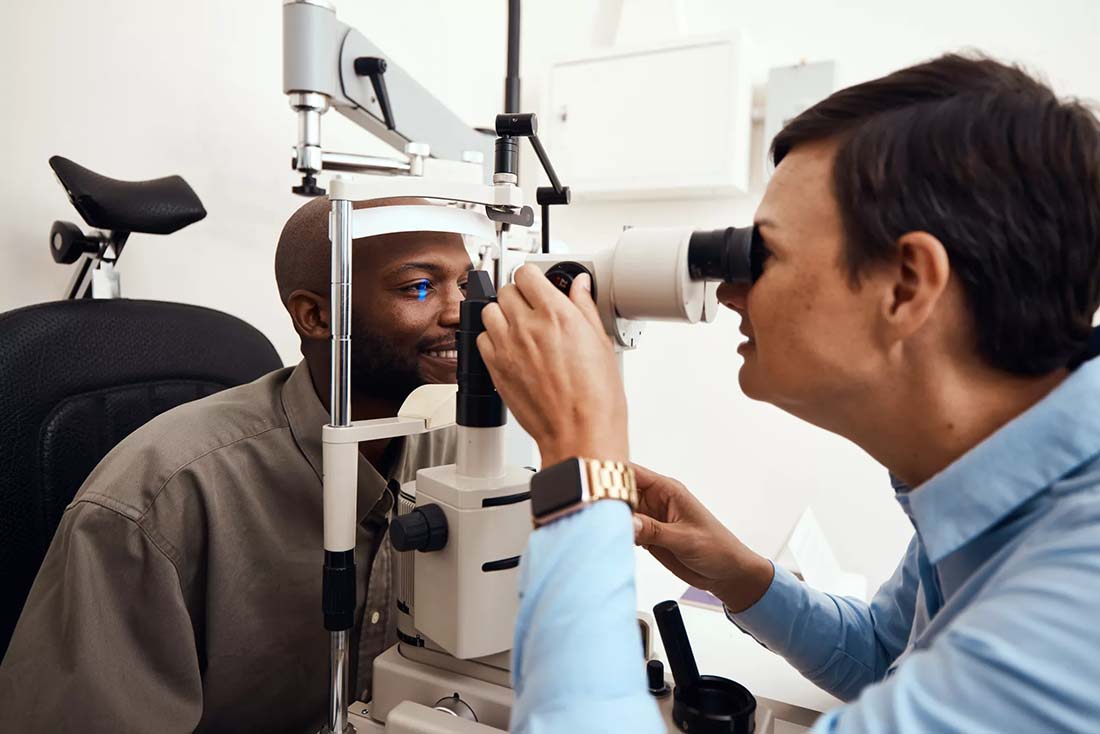Prolonged screen time is a growing concern in our tech-driven world. Frequent device users often experience headaches, blurred vision, and dry eyes. As digital eye strain becomes more prevalent, adopting practical measures to protect eye health is essential. Here are seven effective eye safety tips to help you prevent digital eye strain and maintain optimal eye health.
1. Follow the 20-20-20 Rule
One of the simplest yet most effective ways to combat digital eye strain is the 20-20-20 rule. This rule suggests taking a 20-second break to look at something 20 feet away every 20 minutes. Implementing this habit can significantly reduce eye strain by giving your eyes a much-needed break from the screen.
During these breaks, focus on an object in the distance. This helps relax the eye muscles that are constantly working when you stare at a screen. Additionally, it can prevent the onset of headaches and blurred vision, common symptoms of prolonged screen time. To make this easier, set a timer or use apps designed to remind you to take these breaks. Consistency is key.

2. Adjust Your Screen Settings
Optimizing your screen settings is crucial for reducing eye fatigue. Start by adjusting the brightness. Your screen should match the brightness of your surrounding environment. If it’s too bright or too dim, it can strain your eyes.
Next, consider the contrast settings. High contrast between text and background can make reading easier. For instance, black text on a white background is generally more comfortable for prolonged reading.
Text size also plays a significant role. Increase the font size to reduce the effort your eyes need to focus. Most devices allow you to customize text size in the settings menu.
3. Maintain Proper Distance and Posture
When discussing eye safety tips, maintaining proper distance and posture is essential for minimizing eye strain. Keep your screen at an arm’s length, approximately 20-24 inches from your eyes. This distance helps reduce the effort your eyes need to focus on the screen.
Ergonomic seating also plays a vital role. Ensure your chair supports your lower back and promotes a natural posture. Your feet should rest flat on the floor, and your knees should be at a 90-degree angle. This setup reduces strain on your neck and shoulders, indirectly benefiting your eyes.
Position your screen so that the top of the monitor is at or slightly below eye level. This angle encourages a natural downward gaze, reducing the likelihood of dry eyes. By maintaining proper distance and posture, you can create a more comfortable and eye-friendly workspace.
4. Use Blue Light Filters
Using blue light filters can significantly protect your eyes from the harmful blue light emitted by screens. Blue light exposure can lead to digital eye strain and disrupt your sleep patterns. By using blue light filters, you can reduce these negative effects. Here are some essential eye safety tips to consider:
There are several ways to implement blue light protection. Many devices come with built-in blue light filter settings. You can activate these settings to reduce blue light emission. Additionally, blue light filtering apps are available for download on most devices.
Another effective option is blue light-blocking glasses. These glasses are designed to filter out blue light, providing an extra layer of protection. They are especially useful if you spend long hours in front of screens.
5. Blink More Often
Consciously blinking more often is essential for keeping your eyes moist and preventing dryness and irritation. When you focus on a screen, your blink rate decreases, leading to dry eyes. By making a conscious effort to blink, you can maintain eye moisture and comfort.
Blinking helps spread tears evenly across the surface of your eyes. This action keeps your eyes lubricated and removes small particles that can cause irritation. To remind yourself to blink, consider using sticky notes or digital reminders.
Incorporate regular blinking into your routine, especially during long screen sessions. You can also practice blinking exercises, such as closing your eyes for a few seconds every 20 minutes.
6. Invest in Quality Lighting
Proper ambient lighting is crucial for reducing glare and eye strain, especially in work environments. Poor lighting can cause your eyes to work harder, leading to discomfort and fatigue. Investing in quality lighting can make a significant difference. Here are some eye safety tips to help you maintain optimal eye health in your workspace:
Start by ensuring your workspace is well-lit. Use a combination of natural and artificial light to create a balanced environment. Position your desk near a window to take advantage of natural light, but avoid direct sunlight on your screen to prevent glare.
Consider using adjustable desk lamps with soft, diffused light. These lamps can help you control the lighting intensity and direction, reducing harsh shadows and glare. Additionally, opt for LED bulbs with a color temperature of around 4000K to 5000K, which closely mimics natural daylight.

7. Schedule Regular Eye Exams
Regular eye exams are essential for detecting and managing early signs of digital eye strain and other vision problems. These check-ups allow eye care professionals to identify issues before they become severe. Early detection can lead to more effective treatment and better outcomes.
During an eye exam, your optometrist will assess your vision and check for common problems like myopia, hyperopia, and astigmatism. They will also evaluate the health of your eyes, looking for signs of conditions such as glaucoma or macular degeneration. Regular exams ensure that any changes in your vision are promptly addressed.
Scheduling annual eye exams is a proactive step in maintaining eye health. If you experience symptoms like persistent headaches, blurred vision, or eye discomfort, don’t wait for your next scheduled visit. Seek professional advice immediately. By prioritizing regular eye exams, you can safeguard your vision and maintain optimal eye health.
Maintaining eye health in a digital world requires practical and consistent habits. By integrating these eye safety tips into your daily routine, you can protect your eyes from the adverse effects of prolonged screen time. For professional eye care services, visit The Cataract Surgeons.



